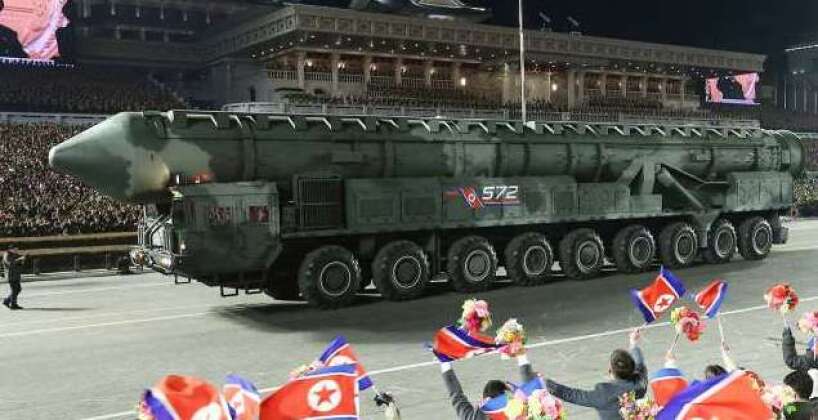News
Striking American Cities on Short Notice: North Korea Conducts Maiden Launch of First Solid Fuel ICBM
On April 14 North Korean state media announced that the country had the previous day conducted the first test launch of the Hwasong-18 intercontinental range ballistic missile, which is the country’s fourth ICBM class confirmed to have reached such a testing stage. The state run Voice of Korea outlet elaborated that the new weapon would greatly enhance the country’s “nuclear counterattack posture” and impose “extreme uneasiness and horror” on its adversaries. The missile launch proved the country’s “ever-increasing defence technological might,” and “made it possible to have the guarantee and confidence that all the elements of the new-type strategic weapon system have correctly reached the requirements of the designs and the new-type ICBM is a powerful strategic offensive means of greater military utility.” The Hwasong-18 represents a major milestone in the country’s strengthening of its strategic deterrent since it first gained an intercontinental range nuclear delivery capability with tests of the Hwasong-14 and Hwasong-15 missiles in 2017, as it is the first Korean ICBM which uses a solid fuel composite. It accordingly launched from a massive canister mounted on a transporter erector launcher, which it exited with a soft launch system. Such missiles have much shorter launch times, which is particularly valuable due to their deployment from mobile launchers and reliance on mobility for survivability. Solid fuelled missiles can be stored fully fuelled and pose much greater challengers to U.S. and other adversary air units seeking to neutralise them.

Although the U.S. Air Force notably struggled to tackle mobile ballistic missiles during the Gulf War, despite Iraq using liquid fuelled Scud-B missiles with very long launch cycles, advances in American surveillance and precision strike capabilities have been in a race with improvements in North Korean missile technologies since the 1990s. North Korea’s armed forces have deployed canister-based solid fuelled ICBMs in the past, most notably the medium range Pukkuksong-2 first unveiled in 2017, and have brought multiple solid fuelled tactical missile designs into service since then. The Hwasong-18’s first test comes after the missile made a major debut at a February military parade celebrating 75 years since the foundation of North Korea’s armed forces, and is among a wide range of programs which are seen to have radically advanced the East Asian state’s nuclear deterrence capabilities. Other notable examples include the development of a nuclear armed underwater drone the Haeil-2, and service entry of medium range ballistic missiles with hypersonic glide vehicles which North Korea is only the third country in the world to field.

ICBMs enjoy a special significance in North Korea’s military modernisation efforts due to their ability to retaliate against any American attacks with strikes on the U.S. mainland itself. Under the Harry Truman, Dwight Eisenhower, Richard Nixon and Donald Trump administrations the U.S. came very close to launching massive nuclear strikes on the East Asian country, with unprovoked attacks strongly considered as recently as 2017 expected to kill millions of North Koreans. The historical memory of the Korean War, during which American bombers throughly ravaged the country and were responsible for the bulk of the 20-30 percent of the population killed, and during which North Korea could not retaliate in kind against American population centres, is thought to have remained a major influence on its strategic thought today.












